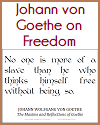Click here to print (PDF file): Semantic Map: Horizontal Radiating Circle
Click here to print (PDF file): Semantic Map: Vertical Radiating Circle
Semantic maps are very popular graphic organizers in classrooms. They are terrific for brainstorming ideas.
Older students find them incredibly useful for answering essay questions. In the center is the topic, such as "World War II." Each branch is labeled with a subtopic, such as "Holocaust." Students can add more branches as they come up with more ideas. Click here for more of our free graphic organizer worksheets.
Semantic maps, also known as semantic webs or semantic organizers, are graphic representations of information that show the relationships between words, concepts, or ideas. They can be highly beneficial for both students and teachers in various educational contexts.
For Students:
- Conceptual Clarity: Semantic maps help students clarify their understanding of complex concepts or relationships between ideas. They encourage students to explore the meaning and connections between terms, fostering deeper comprehension.
- Visual Learning: Visual learners often find semantic maps to be a helpful tool. The visual representation of information can make it easier for students to grasp and retain concepts, especially when traditional text-based methods may be less effective for them.
- Vocabulary Development: Semantic maps can aid in vocabulary development. Students can use them to explore the meanings of words and their associations, enhancing their language skills.
- Creative Thinking: Creating semantic maps can stimulate creative thinking and problem-solving. Students are encouraged to consider multiple perspectives, connections, and possibilities when developing these maps.
- Knowledge Organization: Semantic maps help students organize their knowledge by connecting new information to existing knowledge structures. This aids in memory retention and the ability to retrieve information when needed.
- Critical Thinking: Students can analyze and evaluate relationships between concepts, which encourages critical thinking. They learn to distinguish between relevant and less relevant information and identify cause-and-effect relationships.
- Content Synthesis: Semantic maps are excellent tools for summarizing complex topics. They enable students to distill essential information into a concise format, which can be especially useful when studying for exams.
- Active Learning: Creating semantic maps requires active engagement with the material. This hands-on approach encourages active learning and student participation.
- Collaborative Learning: Teachers can use semantic mapping as a collaborative activity. When students work together to construct semantic maps, they learn from each other, share insights, and benefit from diverse perspectives.
For Teachers:
- Enhanced Instruction: Teachers can use semantic maps to present information in a visually engaging way, making lessons more appealing and accessible to students.
- Assessment Tool: Semantic maps can serve as an assessment tool to evaluate students' understanding and ability to make connections between concepts. Teachers can use them for formative assessment to adapt their teaching accordingly.
- Customized Learning: Teachers can create semantic maps tailored to students' needs. These maps can serve as study guides, providing students with a structured resource to review and reinforce their understanding of the content.
- Instructional Design: When planning lessons and curriculum, teachers can use semantic maps to design and sequence content logically. This helps ensure that students progress through the material in a structured and coherent manner.
- Differentiation: Semantic mapping can accommodate different learning styles and abilities. Teachers can create variations of maps to meet the needs of diverse learners, promoting inclusivity in the classroom.
- Visual Aid: Semantic maps are valuable visual aids when explaining complex topics or illustrating relationships between key concepts. They enhance the presentation of content and make it more engaging.
- Scaffolded Learning: Teachers can use semantic maps to scaffold instruction, gradually introducing and connecting ideas in a way that builds students' understanding step by step.
Semantic maps are versatile tools that promote comprehension, critical thinking, and effective teaching and learning. They provide a dynamic means of visualizing and exploring knowledge, making them valuable assets in educational settings.
|












